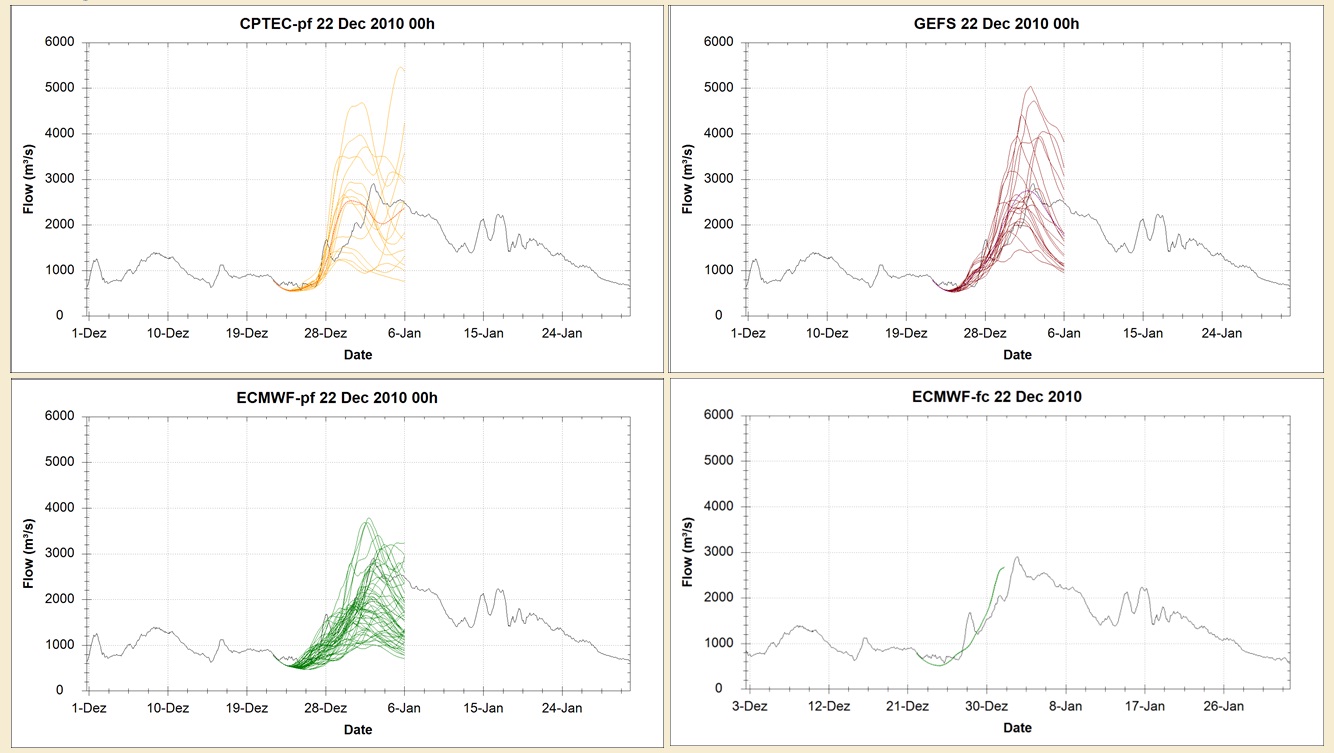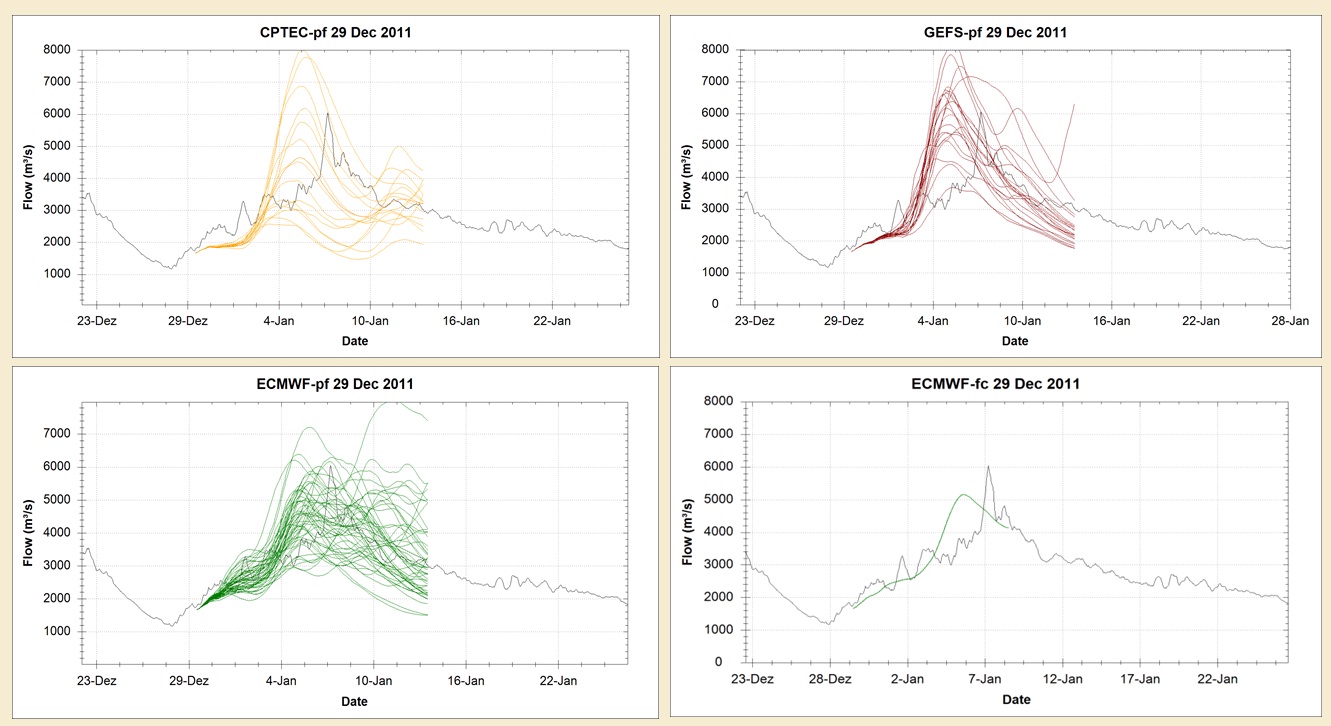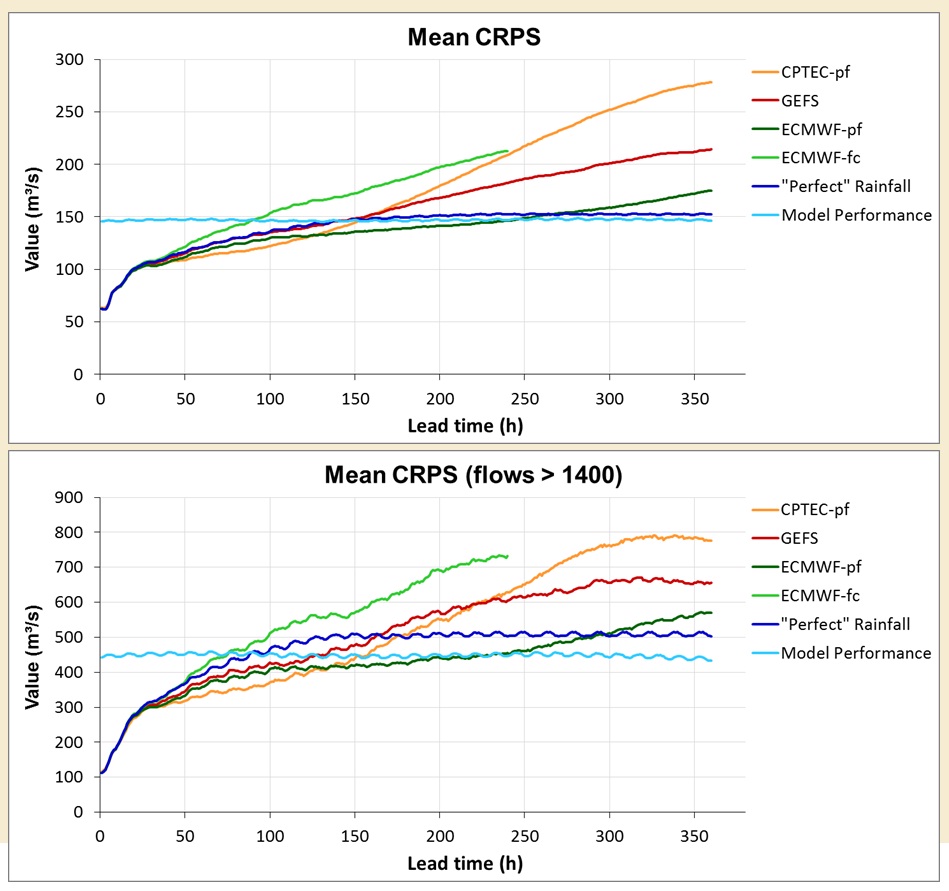Ensemble streamflow forecasting in the Três Marias Basin, Brazil
Contributed by Fernando Mainardi Fan

Três Marias reservoir in Minas Gerais, Brazil (photo by MHR)
Hydropower is the main electricity source of Brazil (80% to 90%) and an economic sector that shows a growing interest to use hydrological ensemble forecasts.
Short-term power production is indeed adjusted using streamflow predictions of lead times up to 14 days (following ONS procedures).
In case of floods, forecasts are used for reservoir safety and downstream/upstream flood control (in situ operations). Currently, rainfall-runoff models are replacing stochastic models for improved short-term forecasting. At the same time, studies have been carried out to replace the use of deterministic precipitation forecasts in favour of ensemble predictions.
My PhD work (developed at IPH-UFRGS with the Large Scale Hydrology group) aims to:
- develop/integrate ensemble forecasting systems for selected Brazilian hydropower reservoirs;
- develop deterministic and stochastic optimization procedures for short-term reservoirs operation;
- evaluate results of ensemble forecasts in terms of added value for flood control and for reservoir operation by optimization techniques.
First results of my work were presented at the session ‘Ensemble hydro-meteorological forecasting’ at EGU General Assembly 2014 in Vienna (see my abstract here) and are summarized below.
Case-study
 The focus is on the Três Marias reservoir, located in the state of Minas Gerais and operated by the electricity producer CEMIG. The catchment area is about 50,000 km².
The focus is on the Três Marias reservoir, located in the state of Minas Gerais and operated by the electricity producer CEMIG. The catchment area is about 50,000 km².
The MGB-IPH large scale hydrological model, developed at IPH-UFRGS, was calibrated against daily observed discharge data coming from 7 gauging stations located in the São Francisco River and its main tributaries. For forecasting purposes, empirical data assimilation at the streamflow gauges and ARMA output correction to the reservoir inflow is performed.
QPF comes from the TIGGE database and comprises CPTEC (Brazil), GEFS (USA) and ECMWF (Europe) ensemble predictions, as well as ECMWF deterministic forecast.
Results
Forecasts were evaluated for five rainy seasons (2008 – 2013), with the help of typical forecast verification metrics (Mean absolute error, Mean CRPS, Rank Histograms, Brier Skill Score, ROC Curves).

Visual assessment of hydrological forecasts for a flood event in December 2010.

Visual assessment of hydrological forecasts for a flood event in December 2011.
Different performance metrics show the added value of the ensembles, in general, in comparison to the use of deterministic forecasts. Here below the results for the Mean CRPS and the Brier Skill Score (using ECMWF deterministic forecast as reference):
Also, the analysis of forecast errors also shows that there is plenty of room for improvement of the hydrological framework: data assimilation, use of or other sources of meteorological forecasts, use of better information from observations, etc.
Our next steps comprise: using a combination of the ensembles, performing a more detailed assessment of precipitation forecasts, applying bias correction methods, incorporating other basins to the study, developing a multi-stage stochastic optimization procedure for the management of the reservoir.
Contributors to this work: D. Schwanenberg, J. Kuwajima, A. Assis dos Reis and W. Collischonn


0 comments